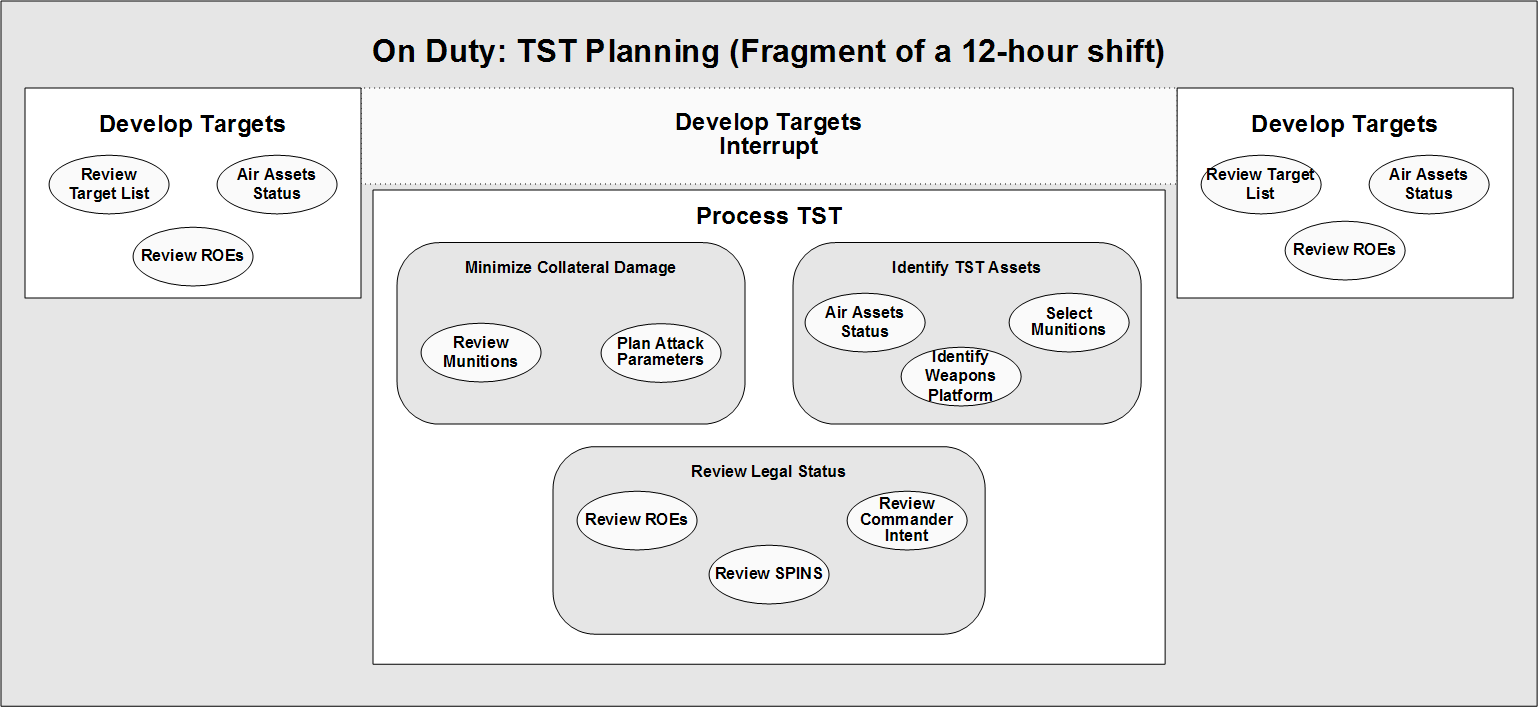A few years ago I became concerned that, due to the nature of the projects I have been working since I took up Cognitive Engineering, I undertake considerable analysis but do not get an opportunity to design anything. That problem emerges because the analyses I undertake are for large-scale, future systems that are progressing through extended development and will not be fielded for several years. As a result of my concern, I developed strategies for building prototypes. One of those strategies involves the use of the Brahms simulation environment to build models of cognitive workflow. I have published two papers on this, which can be accessed via the links in the special topics panel.
Brahms is a multi-agent modeling and simulation language for work system analysis and design. I use it to model cognitive workflow and scheduling of cognitive work; for example how decisions are made, how information is acquired, exchanged and stored for later use, how various cognitive tasks are distributed among agents and how individual agents schedule their own responsibilities.
The focus of most human performance modeling is on methods and issues derived from a techno-centric worldview. The model structure is typically motivated from a mathematical or logical formalism and modeling issues not conceptually tractable in such a framework are excluded from consideration. In contrast, the design of Brahms was motivated by a human-centric theory of human behavior, the theory of Situated Cognition.

A central assumption of the theory of Situated Cognition is that human activity is subsumed within and shaped by context and that most activity is shaped by loosely coupled constraints between several levels of hierarchically nested contexts. Brahms instantiates this assumption in a hierarchical subsumption architecture of work frames and activities.
The figure below shows a subsumption fragment for Time Sensitive Targeting. It depicts the interruption of background Target Development work by the need to process a Time Sensitive Target. Follow the subsumption & workflow link for a brief tutorial.

Integration of Cognitive Requirements into System Design. Proceedings of the 49th Human Factors and Ergonomics Society Annual Meeting. (pp. 239-243). Santa Monica, CA: Human Factors and Ergonomics Society. [CD-ROM] [PDF, 1.25 MB]
Human Performance Modeling for Enterprise Transformation. System Engineering: In Shining Light on the Tough Issues, INCOSE 2006 - 16th Annual International Symposium Proceedings, Orlando, FL USA, 8 - 14 July 2006, paper 3.1.2. Seattle, WA: International Council On Systems Engineering. [PDF, 2.0 MB]
The Brahms simulation environment is available as a free download from http://www.agentisolutions.com/.